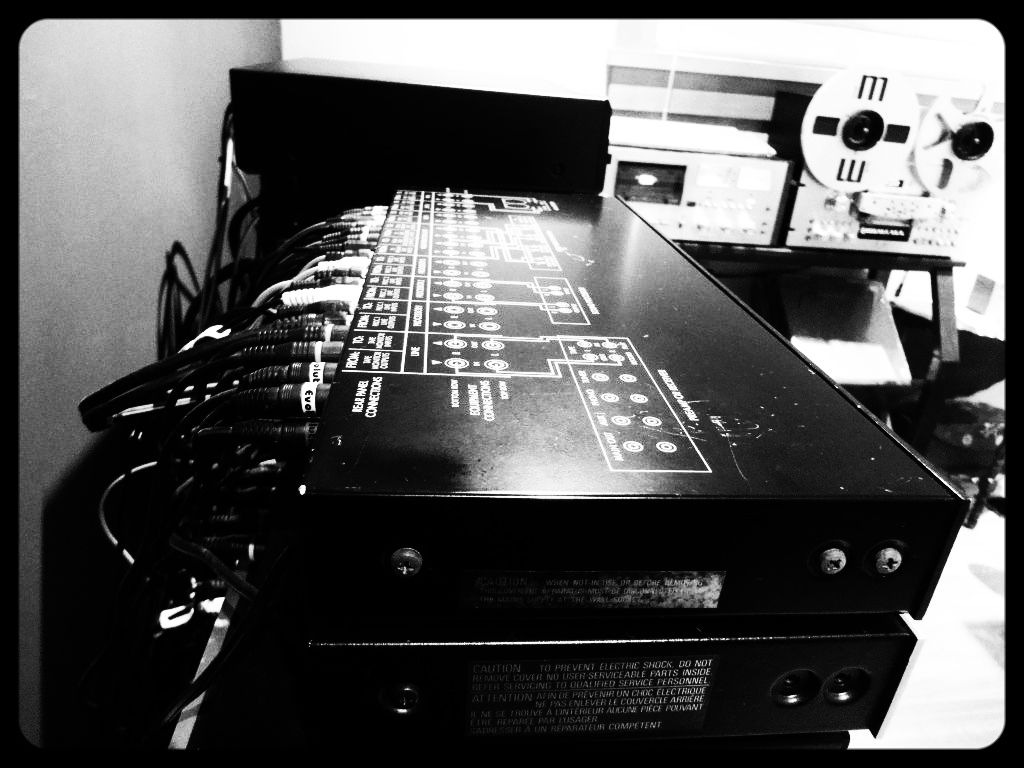Hi guys,
A lot of you already know this subject well, and it's something that I've been studying for years, and I can't ever get enough knowledge. I am reading the owner's manual for the dbx 400X program route selector and it's got some very good information about the proper order in which to connect your audio gear when setting up your system.
It should be REQUIRED READING MATERIAL for anyone that wants to squeeze the very best sound out of their components.
Why?
Well, I'm a total geek when it comes to my system. I want to have as much control as the engineer did when the music was first recorded...and that means that things can get complicated. Right now I am doing a mix and matching of the following components in my main system:
Preamp: SAE 2100L
Amplifiers: A pair of WOPL 1000s
Active Crossover: Dahlquist DQ-LP1
Speakers: Dahlquist DQ-10s with a pair of Dahlquist DQ-1W subs
Sources: Oppo BDP-105 blu-ray/cd player, dbx dx5 cd player (not here yet), Pioneer PL-71 (Shure M-97xE or Audio Technica 12S), Pioneer TX-7500, Teac 1230 R to R, Teac R-888X cassette
Equalizer: SAE 2800 parametric
Noise Reduction / Expansion: Phase Linear 1000 Autocorrelator, dbx 3bx-ds, SAE 5000 Impulse Noise Reduction
Other: dbx 120 subharmonic synthesizer (not here yet, bought as a toy, an old friend had one back in the 80s and raved about it; we'll see ).
).
And to hook 'em all together, yesterday I bought a dbx 400X program-route selector. Got a smokin' great deal on it for $23. Shipping was almost as much... It goes in one of the preamp's tape monitor loops, and provides hookup for up to 3 processors, 1 noise reduction processor, and 3 tape decks. It allows for dubbing between decks, too.
As you can see, there is going to be a ton of cabling, and the selector box seemed like the way to go to relieve the congestion.
One thing the dbx unit provides which is really useful is the ability to put the tape decks before or after any of the processors, so you can encode them with outboard dbx or dolby units, or if the source material really sucks, you can equalize the signal before recording it. It provides amazing flexibility. I don't know how I ever survived without it, and it's not even here yet!
Anyway, I wanted to share this with ya'all. It not only has good suggestions, but it tells you WHY it sounds best. 13 pages of good stuff. Unleash the inner geek that lives inside you!!! Enjoy.
View attachment dbx 400 Owners Manual_original.pdf
A lot of you already know this subject well, and it's something that I've been studying for years, and I can't ever get enough knowledge. I am reading the owner's manual for the dbx 400X program route selector and it's got some very good information about the proper order in which to connect your audio gear when setting up your system.
It should be REQUIRED READING MATERIAL for anyone that wants to squeeze the very best sound out of their components.
Why?
Well, I'm a total geek when it comes to my system. I want to have as much control as the engineer did when the music was first recorded...and that means that things can get complicated. Right now I am doing a mix and matching of the following components in my main system:
Preamp: SAE 2100L
Amplifiers: A pair of WOPL 1000s
Active Crossover: Dahlquist DQ-LP1
Speakers: Dahlquist DQ-10s with a pair of Dahlquist DQ-1W subs
Sources: Oppo BDP-105 blu-ray/cd player, dbx dx5 cd player (not here yet), Pioneer PL-71 (Shure M-97xE or Audio Technica 12S), Pioneer TX-7500, Teac 1230 R to R, Teac R-888X cassette
Equalizer: SAE 2800 parametric
Noise Reduction / Expansion: Phase Linear 1000 Autocorrelator, dbx 3bx-ds, SAE 5000 Impulse Noise Reduction
Other: dbx 120 subharmonic synthesizer (not here yet, bought as a toy, an old friend had one back in the 80s and raved about it; we'll see
And to hook 'em all together, yesterday I bought a dbx 400X program-route selector. Got a smokin' great deal on it for $23. Shipping was almost as much... It goes in one of the preamp's tape monitor loops, and provides hookup for up to 3 processors, 1 noise reduction processor, and 3 tape decks. It allows for dubbing between decks, too.
As you can see, there is going to be a ton of cabling, and the selector box seemed like the way to go to relieve the congestion.
One thing the dbx unit provides which is really useful is the ability to put the tape decks before or after any of the processors, so you can encode them with outboard dbx or dolby units, or if the source material really sucks, you can equalize the signal before recording it. It provides amazing flexibility. I don't know how I ever survived without it, and it's not even here yet!
Anyway, I wanted to share this with ya'all. It not only has good suggestions, but it tells you WHY it sounds best. 13 pages of good stuff. Unleash the inner geek that lives inside you!!! Enjoy.
View attachment dbx 400 Owners Manual_original.pdf

